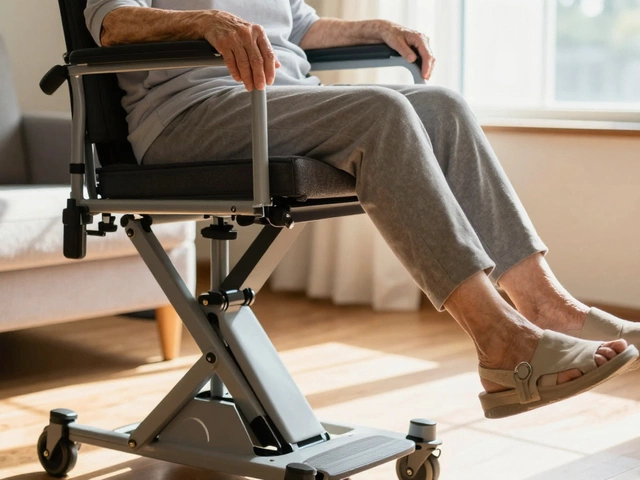Lift Chair Prescription: What It Is and How to Secure One
If you struggle to get out of a regular chair, a lift chair can be a game‑changer. But you can’t just walk into a store and buy one; many people need a prescription to qualify for insurance coverage or NHS funding. This guide breaks down the basics, tells you who qualifies, and shows you the steps to get a prescription that actually works.
Who Needs a Lift Chair Prescription?
Doctors usually write a prescription when they see a clear need for assisted sitting. Typical reasons include severe arthritis, Parkinson’s disease, multiple sclerosis, or a recent hip replacement. If you can’t rise without help or you’re at risk of falling, a lift chair becomes a medical necessity rather than a luxury.
In the UK, a GP or a specialist can assess your mobility, check your range of motion, and decide if a lift chair meets the clinical criteria. The assessment often involves watching you try to stand from a normal chair and noting any pain or loss of balance.
How the Prescription Process Works
First, schedule an appointment with your GP. Bring any medical reports, imaging, or physiotherapy notes that show your mobility limits. During the visit, the doctor will ask about daily activities, fall history, and how a lift chair could improve your independence.
If the doctor agrees, they’ll write a prescription that includes the type of lift chair needed (e.g., electric, hydraulic, or power‑assist) and any specific features like height adjustment or swivel base. Some prescriptions also list the weight capacity and recommended fabric type.
Next, the prescription goes to your local authority or private insurer. They’ll check if the request meets their guidelines and may ask for a justification letter from your doctor. This is why a detailed prescription matters – it speeds up approval and reduces back‑and‑forth.
Once approved, you can order the chair through an approved supplier. Make sure the supplier matches the exact specifications on the prescription; otherwise, the insurance claim could be rejected.
Don’t forget to ask about installation and training. Many providers include a home‑visit to set up the chair and show you how to operate it safely. A quick demo can prevent accidents and ensure you get the most benefit.
Finally, keep copies of all paperwork – prescription, approval letters, and receipts. If you need a replacement or upgrade later, having a clear paper trail makes the process smoother.
Getting a lift chair prescription might feel like a lot of steps, but each one protects you from extra costs and ensures the chair fits your needs. Talk to your doctor, gather your medical records, and follow the paperwork trail. In no time you’ll have a chair that helps you sit down and stand up without a struggle.
Can a Doctor Write a Prescription for a Lift Chair?
A lift chair can be a lifesaver for individuals with mobility issues. But can your doctor actually write a prescription for one? Dive into the ins and outs of getting a lift chair with a doctor's help, the potential health benefits, and what you should know before you consider it as an option.







